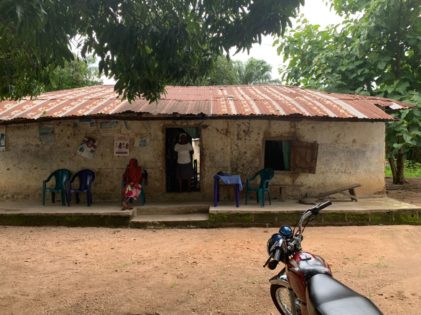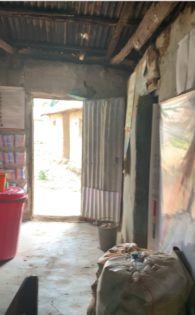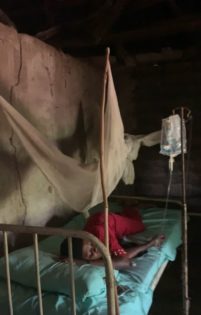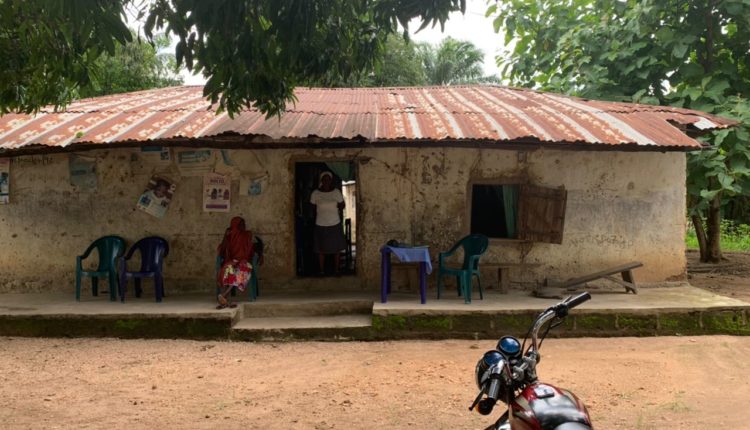Investigation: Increasing maternal and child mortality continue to threaten pregnant women in Nasarawa State despite multi-billion naira ‘Save One Million Lives’ investment
By Elijah Akoji
Over 100 women still die annually during childbirth in Nasarawa state especially across rural communities where there’s a shortage of functional healthcare facilities, and qualified health workers, drugs and medical supplies. This investigation by Solacebase correspondent, Elijah Akoji shows how multi-billion naira Save One Million Lives project is yet to achieve its intended objectives, four years after kick-off, in the state.
In 2012, the Federal Government initiated the ‘Saving One Million Lives Program for Results (SOML PforR) to stem the tide of maternal and child mortality in the country and save an estimated 900,000 women and children that die each year from preventable causes.
According to 2017 Nigeria indicator cluster reports, Nasarawa state, a purely agrarian state located in North-central Nigeria is reported to have the highest maternal and infant mortality rate within the region.
With a population of about 2.5 million people, the state loses about 700 hundred women per 10,000 live births and 103 children per 1,000 live births annually. These staggering statistics made Nasarawa state a worthy beneficiary of any intervention to stem the tide of maternal and child death.

In 2015, the World Bank approved a $500 million credit for the program. Subsequently, in mid-2016, the World Bank provided $55.5 million as part of the credit to the Federal Ministry of Health which then gave $1.5 million to each of the 36 states and the Federal Capital Territory. Also in 2016, the state received another $1.5m for the “Save One Million Lives” initiative.
Furthermore, in 2019, Nasarawa state was reconsidered by the federal government for another $7.5 million in addition to the $1.5 million received in 2016. Sadly, six years into the program, poor access to antenatal service, poor maternal care, continue to blight the prospect of reducing infant and maternal mortality rates, an enemy the program was designed to combat.
Despite promises made by the state government to tackle the problem headlong, rural communities including those in Akwanga East and Kaena LGA, are clear evidence of the poor implementation of the program in Nasarawa state.
The state is still littered with the debris of deplorable health facilities, shortage of experienced health workers, and poor supply of drugs among others. Two years after accessing its first support, data by the National Bureau of Statistics showed that the project had not started making the necessary impact with 47% neonatal mortality rate, 34% post-neonatal mortality rate, 81% infant mortality rate, 43% child mortality rate and 121% under-five mortality rate.
What has changed?
Ladidi Danladi, 33, lives in Gbunchu community, Akwanga East LGA, and deals in palm oil business. Danladi could not hold back her disappointment and pain as she shares the ill-fated experience that almost cost her life due to poor access to healthcare.
“My community have been abandoned by government and we are suffering. The joy of every pregnant woman is to smile at the end of her pregnancy with the safe delivery of her child.
“I started labour at night, and my community, Gbunchu ward is about 8 to 10km to Buku primary healthcare centre (PHC), which is the only health centre close to us. There was no car, a neighbour volunteered his motorcycle and I was rushed to the hospital alongside my husband on the same motorcycle with me. We got to the health centre, there was no nurse, no doctor and the health centre was closed while I started bleeding.

“In my pains, two women in the community helped out. I had some complications which later cost my husband hundreds of thousands of naira at the general hospital before I could get back myself again and we lost the baby,” said Ladidi with sadness enveloping her face.

While the government claimed that the infant and maternal mortality rate has significantly reduced in the state, findings revealed that women of Buku and other rural locations visited in the course of this report still die from poor maternal health care, while infant mortality is still on the increase due to poor access to proper health care and experienced health workers.

Health expert Florence Ibeh, with the Society for Family Health (SFH), believes poor planning, lack of proper design, and poor priority checks contribute significantly to government’s failure in the implementation of the “Save One Million Lives” project.
“Government most times focuses its attention to areas where their works can be seen and photos can be taken. Across the remote communities, they ignore the people to their fate. It is disappointing that governments oftentimes don’t consider the fact that some communities where they choose to spend this money already have a functional health care system, all they need is just a little touch,” Ibeh said.
Unskilled health workers contribute to fatality risk
In Marhai community, Wamba LGA, where Nababa Kabir lives most residents have lost hope in public health system. Kabir shared how he lost his wife and baby during childbirth at Marhai PHC.
“I watched my wife die when she was trying to push out the baby. It was a sad experience for me. I feel heartbroken that I could not protect my wife from dying.
“There were two community health workers who did not even understand what they were doing. If only there was a midwife, my wife would still be alive,” Kabir said.
Another resident of the community, Habiba Suleiman, also has a tale to tell. She lost her first pregnancy 6 months into the pregnancy due to lack of medical care.
“I started visiting Marhai PHC, and despite showing up for antenatal there was no staff on ground to attend to me and other pregnant women. The available staff told us that the person to guide us through the antenatal process will soon come. For two months there was no antenatal until I stopped going.
“As recommended by a close friend, I chose the traditional method. I normally squeeze Ugwu leaves and then drink the extract. That was all I was taking for several months. I was okay until the sixth month of my pregnancy and I noticed my baby stopped moving. I was in pain for about a week. After selling some farm produce in the store, my husband rushed me to Wamba General Hospital where the baby was confirmed dead. The remnants of the child were removed through an operation which cost my family hundreds of thousands of naira,” Habiba lamented.
When Solacebase contacted, the officer-in-charge of Marhai PHC, she declined to speak to this newspaper.
However, a staff at the facility who craved anonymity since she was not permitted to speak on the issue opened up on the true state of the PHC.
She said: “The truth is we are not trained to carry out antenatal services and we have a nurse that comes around Wamba. She is a midwife specialist and travels over 40 kilometers to get here. It’s been two months since we last saw her and I want to believe something is wrong somewhere.”
Auwal Salisu, is the district head of Marhai community, in Wamba LGA. He narrates to Solacebase how he instructed that the PHC be closed down after Nafisa’s death.
“With the Nafisa situation, we have written to the local government, and were assured that there will be an urgent rehabilitation and recruitment of experienced skilled workers. It’s almost a year now, and nothing has been heard again or done.”
Interestingly, Marhai PHC, provides health support to over seven communities across the political ward, yet, they are faced with such neglect despite the immense support and funding the state received from the ‘Save One Million Lives’ program which is designed to prevent the death of people like Nafisa.
Read Also: President Buhari signs CASSON Act
Although reports that antenatal coverage has risen from 20% to over 70% across PHC in Wamba LGA since the introduction of the Performance Base Financing (PBF) strategy is commendable, findings showed that majority of rural women in the local government area rarely have access to antenatal and postnatal services. The PBF, is a more evidence based output approach to strengthen service delivery and performance at the health facilities.
The situation is not different in Aloshi District, Keana LGA where pregnant women also die because they cannot access prompt medical services during labour and delivery. Residents and community leaders continue to decry the situation adding that the lives of many pregnant women in the community could have been saved if there were functional healthcare facilities.
Halima Sani is a mother of four who resides in Agaza community, Aloshi District. She told Solacebase that the plight of the community in terms of access to quality health care is better imagined than experienced.
She said the proximity to health care facility is a major challenge in the community that has lingered for too long with no hope in sight.
Calling on relevant authorities to come to their aid and alleviate their suffering, Sani said it will stop the trend of maternal and infant deaths in the community. Another resident, Hafsat Sale, said many pregnant women in the community make use of herbalist and traditional medicine because of the stress they go through before they can access medical attention from the hospital which is about 7 km away.
The development, she said, has led to complications in some cases, and fatal results due to the side effects of consuming such unregulated traditional medicines.
Read Also: Board promotes 226 Immigration, Correctional, NSCDC officers
Halima Sani further said that the absence of hospitals in the community has contributed to high patronage of traditional medicine providers, a sector poorly regulated in the state.
Traditional childbirth practice still subsists
Although, factors such as unavailability of skilled professionals at the health facilities, ill-motivated staff, and poor working conditions, lack of essential drugs, consumables, and equipment, keeps contributing to the general poor healthcare delivery in Nasarawa State.
These problems have increased the popularity of traditional medicine practitioners who often lack the requisite skills to handle complicated obstetric cases.
Hauwa Ibrahim, in Kambre Ward, Akwanga LGA, is a prominent traditional birth attendant. In the absence of quality healthcare delivery, she dissuades women from going to the hospital during childbirth and believes her practice remain more efficient than government health centres.
“We all see how bad our hospitals look, zero motivation for workers and so on. I charge just N2000 and sometimes less, to help pregnant women deliver safely. It is not a new thing. My parents and even your parents were not born in the hospital, so why allow our women continue to die in the hospital when we can manage them traditionally and give them the necessary support with local herbs.”
“Traditional childbirth is safe, healthy and to me, the best, so I will continue to encourage women to patronize us. We can even do better than the unprofessional midwives across our health centers that are not even paid salaries,” Ibrahim said.
Dr. Ibrahim Gazali, community medicine department, Bayero University Kano, believes resorting to traditional medicine, especially for pregnant women, is risky and should be discouraged.
Read Also: Customs reopens Kamba border
“Herbs, particularly local herbs, are very dangerous for pregnant women, so women who venture into the traditional way of seeking antenatal delivery only risk their life and the lives of their baby. Pregnant women need the best care as they carry another life in them.”
Health workers public-private migration
While many consider working for the government one of the safest decisions to make, in Nasarawa State, health workers consider it a risky decision considering the poor government priority and motivation of health workers compared to their colleagues in private clinics.
Fidelia Dakwem, a nurse who has worked across different primary healthcare centers in Nasarawa state, is one of those, who feel leaving is the best decision she has made.
“Why should I continue to work for someone who will owe me salary for months and I have family to take care of including my aged mother. I have never regretted my decision to leave government work alongside three of my colleagues. We got a job in a private clinic where even though the money is not much, it is consistent, and we seem to have better opportunities and equipment,” Dakwem told Solacebase.
The mass migration of health workers, from government owned to private clinics in Nigeria, remains a topical issue often neglected by the government. It continues to be a reoccurring decimal in the health sector in Nasarawa state despite claims by the state government to have prioritized the welfare of its health workers through the ‘Save One Million Lives’ (SOML) program.
A public health expert, Maurice Idachaba with Electronic Health Africa EHA, Kano office, said: “Rural women can’t afford the services of most private facilities. Remember they are often farmers, and usually seasonal farmers who don’t farm all year round. This means government must do everything to keep these health workers motivated and even dedicated to saving lives in line with the SOML program.
“One can understand that the program is in phases but it is already more than four years into the program and no excuse is tenable for rural residents across Nasarawa state not feel the impact of the program,” said Idachaba.
Government gives incomplete account, claims program is well implemented
Anna Joshua, the program manager of the Save One Million Live project, via telephone conversation with this reporter stressed that the program is well implemented.
“All primary health care centres across the 13 LGAs in Nasarawa state are already benefiting from the project and they have been transformed through rehabilitation. This has helped to significantly reduce the rate of infant and maternal mortality, She explains to Solacebase.
She declined to speak further on the issue and asked that an official email be sent to her, stating all the questions and information required. She promised that she will respond to all questions as soon as possible. Weeks after this was done, she is yet to reply the email despite repeated reminders.
Read Also: How bandits, Ansaru terrorists clashed in Kaduna
In a telephone conversation with Director Planning, Research, and Statistics of Nasarawa state Primary Healthcare Development Agency, Stephen Sasetu, also declined comments. Efforts to speak with the Nasarawa state health ministry about the project also proved abortive as both the Director of Procurement, Amos Daven, and the Director of Programs Hassan Koli, in a telephone conversation also declined comments.
“Only the commissioner can speak or when we are instructed to speak on behalf of the ministry. So reach out to the office of the commissioner, you may be lucky to get some useful information,” Koli said.
Read Also: Investigation: Increasing maternal and child mortality continue to threaten pregnant women in Nasarawa State despite multi-billion naira ‘Save One Million Lives’ investment
A Freedom of Information request sent by Solacebase to the health commissioner on July 22, 2022, specifically asking for details on the implementation of the ‘Save One Million Lives’ program implementation across the state was greeted with silence.
This publication is produced with support from the Wole Soyinka Centre for Investigative Journalism (WSCIJ) under the Collaborative Media Engagement for Development, Inclusion and Accountability project (CMEDIA) funded by the MacArthur Foundation.



Comments are closed.